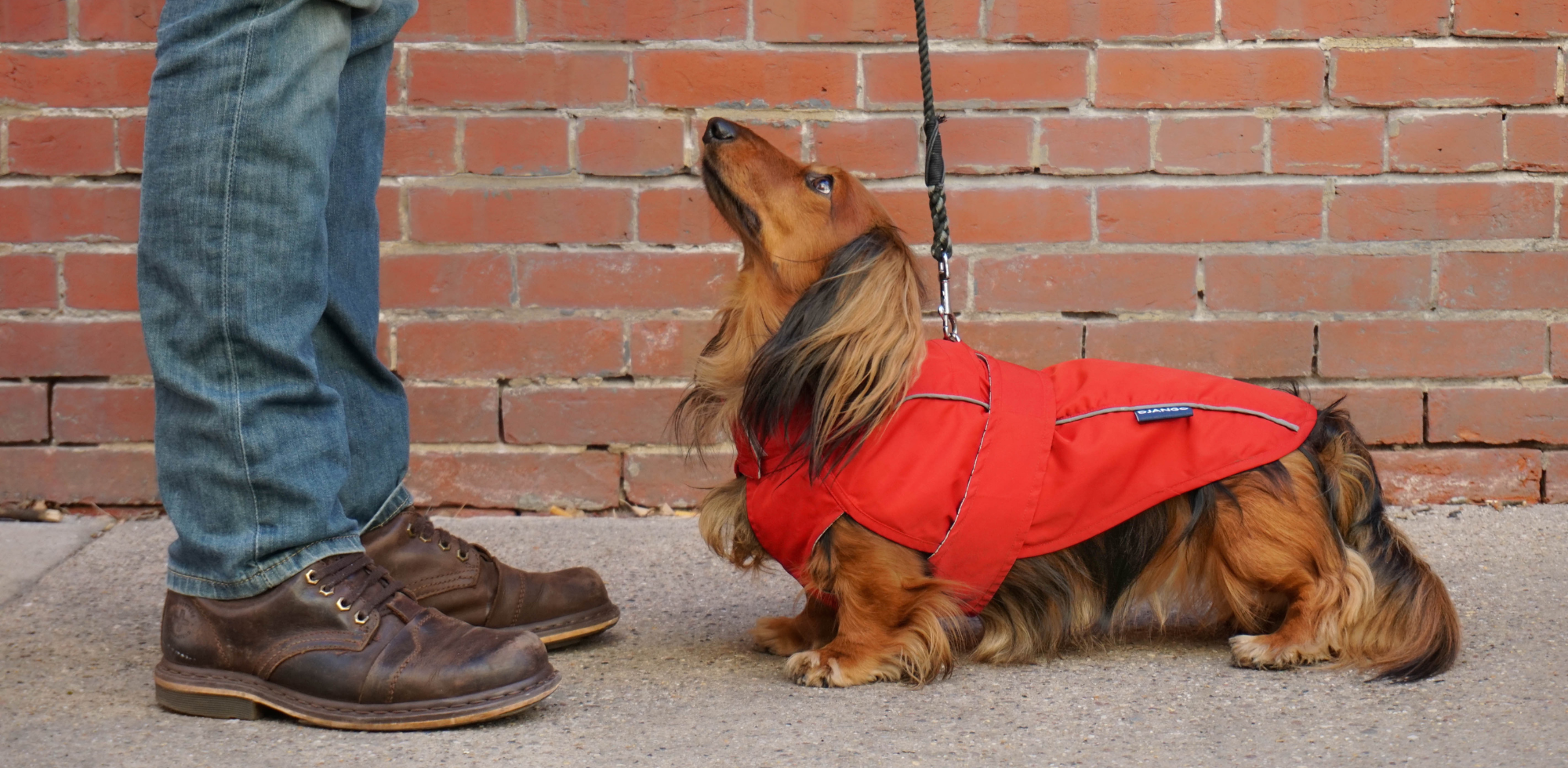Parvovirus is one of the most common and potentially fatal dog diseases. It can be carried on your dog's hair and feet or on your shoes and clothing. While bleach kills it, sterile environments can quickly be reinfected. Parvovirus is preventable, but it kills 9 out of 10 dogs if left untreated.
If you are an experienced or new dog owner, you have probably heard the term parvovirus (or "parvo") bandied about. You may have even taken your dog to get his parvovirus vaccine. But what causes parvovirus in dogs, and what dog breeds are most at risk? What are the symptoms of canine parvovirus? How are dogs with parvovirus diagnosed, and can they be successfully treated? How long can a dog live with parvovirus, and does the disease cause any long-term side effects? How can parvo in dogs be prevented?
Here is everything you need to know about the causes, symptoms, treatment, and prevention of parvovirus in dogs.
WHAT IS PARVOVIRUS IN DOGS?
Parvovirus is a highly contagious and potentially deadly disease in dogs that occurs throughout the world. It is caused by parvovirus strains called CPV-2a, CPV-2b, and CPV-2c.
Parvovirus attacks the cells that line a dog’s small intestine. The small intestine absorbs nutrients, water, and salt; it keeps the bacteria in his stomach from invading the rest of his body. By destroying the lining of the small intestine, parvovirus prevents the small intestine from properly functioning. As Baker Institute for Animal Health explains, "Eventually the intestinal surface can become so damaged that it begins to break down, and the bacteria that are normally confined to the gut penetrate the intestine walls and enter the bloodstream. This causes both significant fluid loss from diarrhea and widespread infection inside the body."
Parvovirus also targets your dog’s bone marrow and white blood cells. This causes his immune system to weaken and eventually shut down.
HOW IS CANINE PARVOVIRUS SPREAD?
Parvovirus is most often spread when dogs eat or sniff infected poop. According to NCBI, this is because dogs shed "35 million viral particles (35,000 times the typical infectious dose)" in a single ounce of poop. For your reference, it only takes 1,000 viral particles for an unvaccinated dog to become infected with parvovirus. Parvovirus can be shed in dogs’ feces 3-6 weeks after they recover.
Parvovirus can be spread through direct contact with an infected dog or wild animal (e.g., coyotes, foxes, raccoons, and skunks). It also can be transmitted by indirect contact with a contaminated object (e.g., a harness, food or water bowl, or a toy).
WHAT DOGS ARE MOST AT RISK FOR PARVOVIRUS?
Parvovirus can affect all dogs, but puppies that are under 4 months old have the highest risk. Unneutered male dogs are also twice as likely as unspayed females to develop the disease.
Unvaccinated dogs are 12.7 times more likely to be hospitalized with parvovirus. They are 3 times more likely to be admitted in July, August, or September, compared with the rest of the year.
American pit bull terriers, Doberman pinschers, English springer spaniels, German shepherds, Labrador retrievers, rottweilers, and Yorkshire terriers are also more susceptible to parvovirus.
Can humans get parvovirus from dogs?
According to the Center for Disease Control (CDC), pet dogs and cats cannot transit parvoviruses to humans. Dogs and cats are susceptible to several parvoviruses, but none of these cannot be transmitted to humans.
Humans are actually susceptible to their own parvovirus, Parvovirus B19. This virus is different than canine parvoviruses and cannot be transmitted to dogs or cats.
SYMPTOMS OF PARVOVIRUS IN DOGS
Signs and symptoms of canine parvovirus can appear within 2 to 14 days of infection. They can be mild or severe and include:
- Dehydration
- Low energy
- Depression
- Severe weight loss
- Poor appetite
- Weakness
- Fever
- Low body temperature
- Eye redness
- Rapid heartbeat
- Shortness of breath
- Abdominal pain/bloating
- Vomiting
- Sickly-sweet smelling/bloody diarrhea
- Blood poisoning (sepsis)
- Cardiogenic shock
- Congestive heart failure
If your dog has any symptoms of parvovirus, please visit your vet as soon as possible. Consider calling them ahead of time, so they can plan to quarantine your puppy. This prevents him from infecting other dogs.
OTHER SIDE EFFECTS OF PARVOVIRUS IN DOGS
Parvovirus can cause your very young or unborn puppy’s heart to swell. Heart inflammation (also known as Myocarditis) does not cause any symptoms until it is severe enough to result in congestive heart failure. It can lead to sudden death within the first 8 weeks of life.
According to a 2018 study in PLoS ONE, dogs that survive parvovirus are also 5 times more likely to develop inflammatory bowel disease. It causes low-grade fever, vomiting, loose stools, tiredness, weight loss, and a poor-quality coat.
HOW IS CANINE PARVOVIRUS DIAGNOSED?
FECAL ELISA TEST
A fecal ELISA test is the most common test for canine parvovirus. ELISA stands for enzyme-linked immunosorbent assay. While it sounds complicated and high-tech, it is actually the same technology that is used for home pregnancy tests. In a fecal ELISA test, a microtiter plate that has 96 "wells" is coated with parvovirus antibodies. Then your dog’s poop is put in a microwell and sprayed with a color-changing chemical. If his poop changes colors, he has parvovirus.
A fecal ELISA test can be completed in your veterinarian’s office in less than 15 minutes. Though it is accurate 80% of the time, it occasionally produces false positive or negative results. For example, if your dog was recently vaccinated with a live vaccine (the type of vaccine that is most effective), it may produce a false positive.
POLYMERASE CHAIN REACTION TEST
Your veterinarian may also use a polymerase chain reaction test. It is the newest way to test for canine parvovirus. It requires your dog’s stool to be sent to a reference lab. The polymerase chain reaction test finds small pieces of parvovirus DNA in his poop and magnifies them. While it is 92.2% accurate, it can produce a false positive if your dog has been vaccinated for parvovirus or he is passing small amounts of virus.
BLOOD TEST
Your veterinarian may also perform a simple blood test to measure your dog’s white blood cell count. Because parvovirus starts by attacking your dog’s bone marrow, a low white blood cell count could mean that he has the disease. If he has both a positive fecal ELISA test and a low white blood cell count, a fairly confident diagnosis of canine parvovirus may be made.
TREATMENT OPTIONS FOR PARVOVIRUS IN DOGS
Common Treatments
Most dogs with parvovirus are treated with injectable antibiotics, antacids, and anti-nausea meds. They are also given fluid therapy and nutritional support.
- Antibiotics. Injectable or IV antibiotics (e.g., Amikacin, Cefazolin, and Gentamicin) are used when your dog’s GI tract is damaged. They help prevent blood poisoning (also known as sepsis). Common side effects include kidney damage or hearing and balance problems.
- Antacids (also known as gastroprotectants). Injectable antacids (e.g., cimetidine, ranitidine, or famotidine) help heal ulcers in your dog’s esophagus, stomach, and small intestines. An antacid injection costs $30.
- Anti-nausea medications (also known as antiemetics). Injectable anti-nausea medications (i.e., Maropitant, Ondansetron, and Dolasetron) are used to increase your dog's appetite and keep him from vomiting. A 20 mL vial of Maropitant (brand name: Cerenia®) costs approximately $492.
- Fluid therapy. IV fluids (e.g. 0.9 percent saline, Ringer’s, Normosol-R, and Plasmalyte) are used to keep your dog hydrated. Dextrose is added to prevent him from getting low blood sugar while potassium is included to balance his electrolytes. According to Preventive Vet, IV fluids cost $50-$75.
- Nutritional support. Dogs with parvovirus are hand or syringe-fed a prescription or home-cooked diet. White rice, oatmeal, boiled chicken, beef, and potatoes are usually recommended.
Advanced Treatments
In severe cases, dogs with parvovirus may be given Neupogen, SEPTI-serum, a plasma transfusion, or a fecal transplant.
- Neupogen (also known as Filgrastim). Neupogen is a genetically engineered hormone. Made by an American biotechnology company called Amgen, it helps increase your dog’s white blood cells. Neupogen costs $2,000, according to Veterinary Practice News.
- SEPTI-serum. SEPTI-serum is made from the blood of horses. It is given by IV or injected into your dog’s muscle or under his skin. According to DMV 360, dogs younger than 16 weeks old are more likely to die when they are treated with SEPTI-serum. It costs $3,000.
- Plasma transfusions. If your dog’s protein or white blood cell count is too low, he may need a plasma transfusion. Plasma is obtained from donor dogs in the hospital or purchased from animal blood banks. It includes parvovirus antibodies and a liver protein called albumin that boosts your dog’s blood volume. Plasma transfusions cost $150 to $300 per unit.
- Fecal transplant. Frozen fecal matter is taken from a healthy donor dog and then mixed with saline. It is transplanted into your dog’s rectum using a 20 mL syringe and urinary catheter. The procedure is repeated every 48 hours or until it is done 5 times. A fecal transplant costs between $500 and $1,500.
WHAT IS THE LIFE EXPECTANCY FOR A DOG WITH PARVOVIRUS?
More than 90% of dogs that do not get treated for parvovirus will die within 48-72 hours. Dogs that are treated at home have a 50/50 chance of survival. According to a 2020 study in Animals, dogs that receive in-hospital care have an 86.6% survival rate. The average treatment time for parvovirus is 9.3 hours. Medical treatment increases life expectancy to 96.7% after 5 days.
HOW TO PREVENT PARVOVIRUS IN DOGS
Here is how to protect your dog from parvovirus:
- Vaccinate your puppy for canine parvovirus at 6, 10, and 14 weeks of age. If you got your puppy from a reputable dog breeder, he or she should have already been vaccinated at least once if not twice before coming home to you. Make sure you have documentation of any vaccines your little one received. Additionally, your dog should receive a booster shot 1 year after completing the initial series. After that, your dog will need a booster shot every 3 years. Keep in mind that no vaccine is 100% effective.
- If the temperature in your home is higher than 68°F, it is safe to bring your new puppy inside one month after the active infection has ended. You can also disinfect his dog bowls, toys, and bedding with bleach. Mix one part bleach with 30 parts water and apply it for at least 10 minutes. Steam cleaning can also kill parvovirus if temperatures reach 120-130°F.
- Because outdoor environments (including beaches, parks, and lawns) cannot be disinfected with bleach, your puppy can be exposed to parvovirus without any warning. Parvovirus thrives in snow and desert climates and can live in the ground for up to a year. If your yard is contaminated and frozen, wait for the snow or ice to completely thaw out before you allow your new puppy in the yard. If it is in direct sunlight, it should be considered contaminated for 5 months. Is it in the shade? Consider it contaminated for 7 months.
BEFORE YOU GO
If you have any questions or comments about canine parvovirus or want to share an experience with our dog-loving readers, please leave a comment below.




